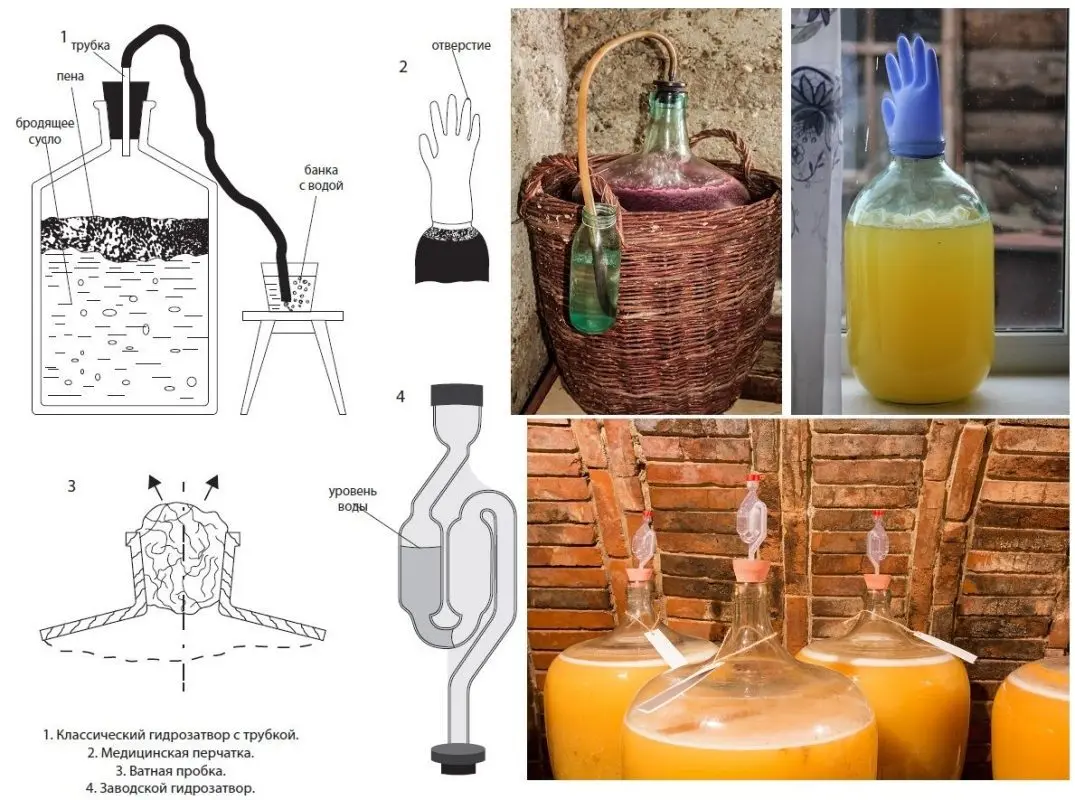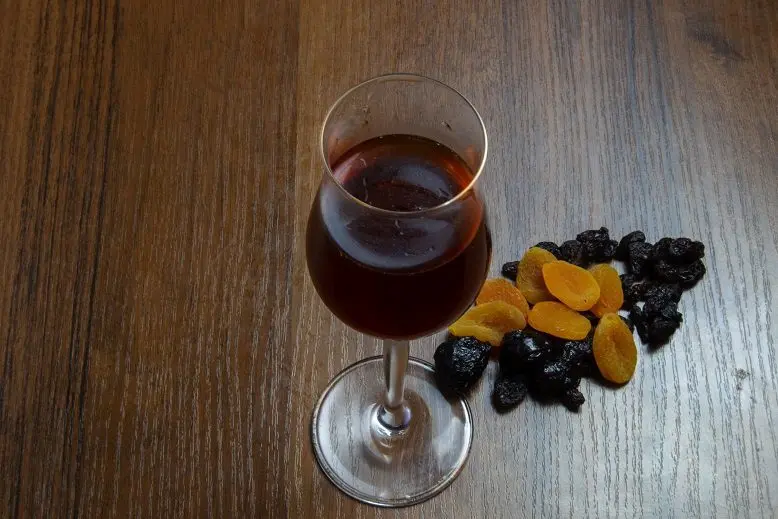With the right approach, dried fruits are suitable for winemaking, and can be used all year round. They contain the most important thing – dry matter, and the moisture of fresh fruits and berries can be successfully replaced with water. We will consider the universal technology for making wine from dried fruits.
You need any homemade or store-bought dried fruits: dried apricots, prunes, raisins, dates, dried apples, pears, cherries, etc. After a few experiments, you will find the optimal proportions of the ingredients. You can also make wine from only one type of dried fruit. My optimal composition is presented below, the drink is moderately sweet with a slight peach flavor and plum notes.
Ingredients:
- dried apricots – 1,5 kg;
- raisins – 1 kg (plus another 200 grams for sourdough);
- Prunes – 0,5 kg;
- sugar – 1 kg;
- water – 10 liters.
dried fruit wine recipe
1. Since wild yeast does not always remain viable on dried fruits (especially store-bought ones), it is better to be safe in advance and make raisin sourdough 3-4 days before preparing the wine must, thanks to which the wine will ferment.
To do this, pour 150-200 grams of unwashed raisins into a bottle or jar, add 50 grams of sugar, pour 400 ml of water at room temperature. Stir, close the neck of the container with a cotton plug, put for 3-4 days in a dark, warm place with a temperature not higher than 29 ° C. The sourdough is ready when foam is observed on the surface and a hiss is heard.
When mold appears, the starter should be poured out and a new batch made on another raisin.
2. Rinse dried fruits under running water, remove seeds (if any).
3. Boil water (9,6 liters, since 400 ml went into the starter).
4. Pour boiling water over dried fruits, mix, cover, leave for 60 minutes.
5. Strain the infusion through cheesecloth. Drain the liquid part into a container with a wide neck.
6. Pass the pulp through a meat grinder.
7. Mix the crushed pulp with the infusion. Add 500 grams of sugar.
8. Wait for the wort to cool down to 25°C. Add sourdough (can be combined with raisins). Mix.
9. Leave the container in a dark room with a temperature of 18-25°C. Close the neck with gauze so that insects do not get inside. Stir twice a day with a clean hand or a wooden stick. After 12-48 hours, foam, hissing and a slight sour smell should appear. This means fermentation has begun.
10. Leave the must for 4-5 days from the moment of mixing, until almost all the pulp (cake) floats to the top.
11. Strain the wort through several layers of cheesecloth, squeeze out the pulp.
12. Pour the liquid part into a fermentation tank, filling no more than 70% of the volume. Add a second portion of sugar (500 grams). Mix. The pomace is no longer needed, they can be thrown away.
13. On the neck of the fermentation tank, install a water seal of any design or a medical glove with a small hole in one of the fingers. It is important to observe the fermentation conditions indicated in the 9th stage.

14. After 5 days, add the remaining sugar (500 grams). To do this, remove the water seal, drain 0,5 liters of wort through a tube, dilute sugar in it. Pour the resulting syrup back and install a water seal.
15. Depending on the temperature and yeast activity, the fermentation of wine from dried fruits lasts 30-65 days. When the water seal has stopped emitting gas (gurgle) or the glove has deflated, a layer of sediment has appeared on the bottom, and the wine itself has become lighter, you can proceed to the next step.
If after 50 days the fermentation has not ended, in order to prevent the appearance of bitterness, the wine must be drained from the sediment and again put under a water seal.
16. After the end of fermentation, drain the young wine through a straw into another container, without touching the sediment.
17. Taste. If desired, add sugar to increase the sweetness (50-200 grams per liter). Separately, you can fix the wine with vodka or alcohol (5-15% of the volume). The addition of hard alcohol promotes storage.
18. Close the container with wine hermetically. If sugar was added, it is first advisable to leave it under a water seal for 10-12 days in the cold, then, in the absence of fermentation, tightly cork.
19. Move the wine to a dark room with a temperature of 8-16°C, such as a refrigerator or cellar. Leave for 3-8 months to ripen (the longer the better).
20. When sediment appears (at first every 15-20 days, then less often), filter the wine, pouring from one container to another.
21. Pour the aged wine from dried fruits into bottles, seal tightly.
When stored in a cellar or basement, the shelf life is up to 3 years. Fortress (without fixing) – 8-12%. The taste depends on the composition and proportions of dried fruits.










